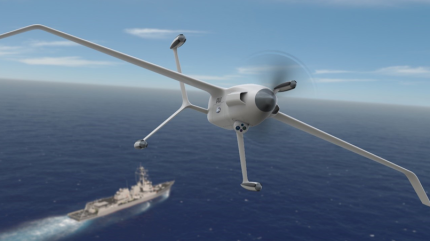
AeroVironment has been chosen by the Defense Advanced Research Projects Agency (DARPA) to continue developing its X-Plane design under the Advanced Aircraft Infrastructure-Less Launch and Recovery (ANCILLARY) programme, the manufacturer announced on 28 May 2024.
The programme focuses on creating vertical take-off and landing (VTOL) uncrewed aircraft systems (UAS).
The company’s design, Wildcat, is a Group 3 UAS, which includes uncrewed aircraft weighing between 55 and 1,320lb. VTOL systems like Wildcat can take off, hover, and land vertically, making them suitable for close confines.
The ANCILLARY programme aims to develop a lightweight, high-payload, long-endurance VTOL UAS. Wildcat is designed to meet these requirements, offering a mission radius of more than 500 miles and over 12 hours of operational endurance with a 60lb payload.
One of Wildcat’s features is its ability to operate in high sea states and strong winds, achieving speeds over 115 mph. This capability allows it to cover long distances rapidly, essential for responding to dynamic threats. The tail-sitter design, which enables the aircraft to take off and land on its tail, reduces the need for extensive infrastructure.
Wildcat’s modular payload capacity provides flexibility for different mission requirements. The UAS is intended to operate within a fleet, using collision-avoidance and autonomous technologies to manage airspace and coordinate complex search missions, even in challenging environments.
Chris Fisher, vice president of MacCready Works at AeroVironment, noted the emphasis on controllability and autonomy. “We have prioritised controllability to ensure Wildcat meets the ‘anytime, anywhere’ goal of DARPA’s ANCILLARY program,” Fisher stated.
Wildcat utilises AeroVironment’s SPOTR-Edge machine learning-enabled computer vision system to enhance its operational capabilities. This technology allows the UAS to interpret visual data and navigate autonomously, building on AeroVironment’s experience with other systems such as Raven, Puma AE, and JUMP 20.
At this stage of the X-Plane programme, six companies – AeroVironment, Griffon Aerospace, Karem Aircraft, Method Aeronautics, Northrop Grumman, and Sikorsky- have viable deigns being considered by DARPA.



